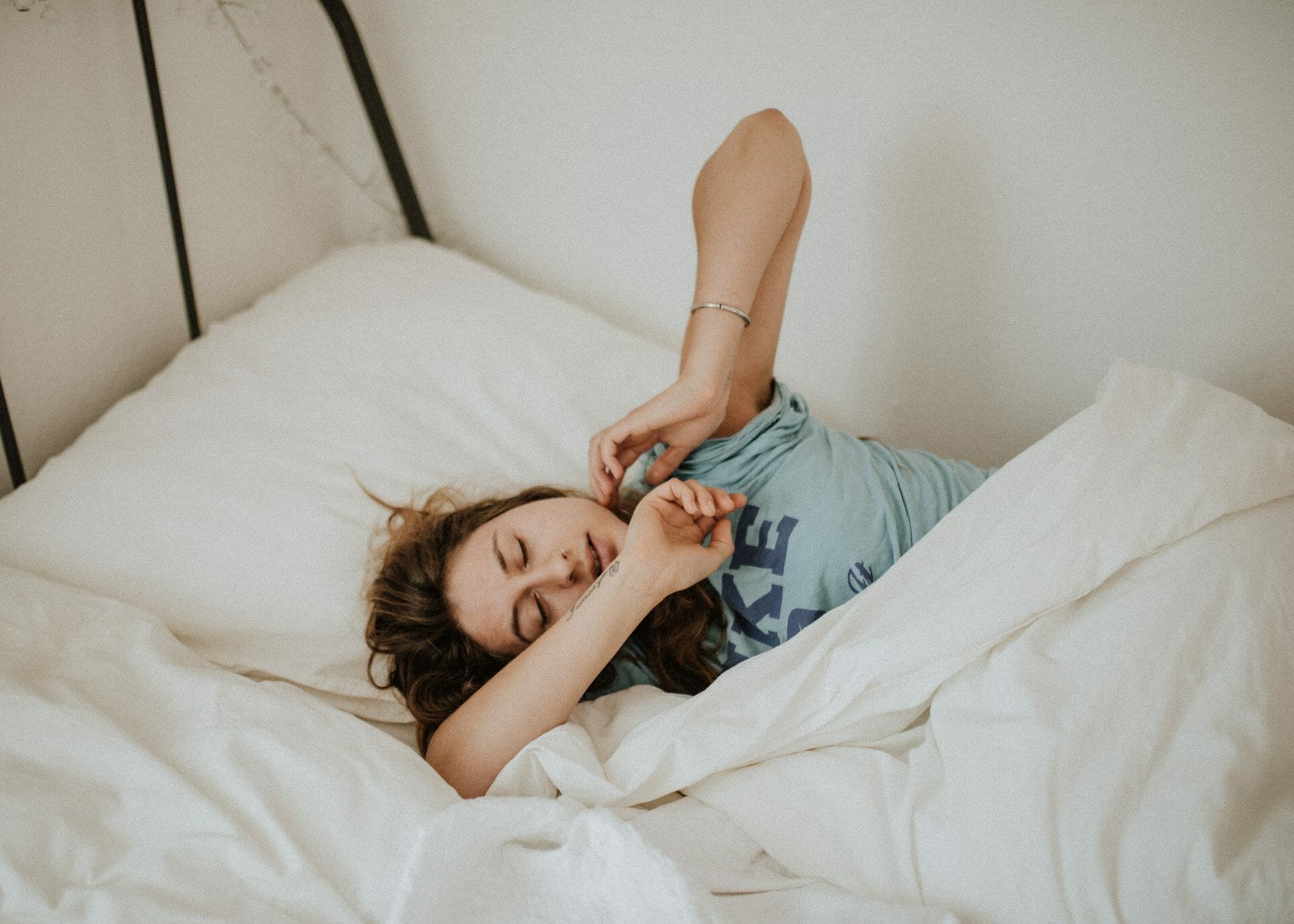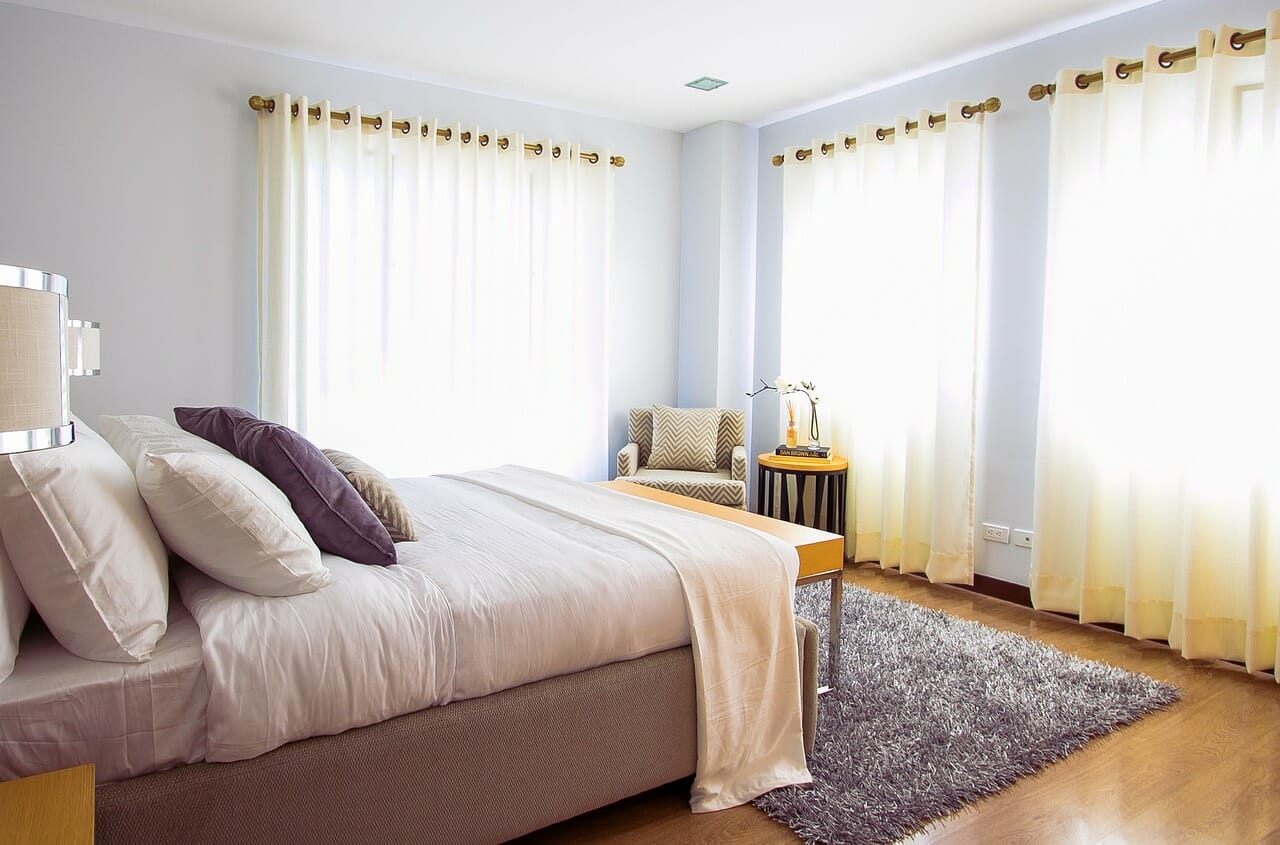What is the healthiest sleeping position for you? Sleep is essential for our physical and mental health. It can help control appetite, boost our immune system, and improve our mood. However, did you know that our sleeping positions can greatly affect the quality of our sleep? Sleeping in a bad position can result in stiff neck or back pain, snoring, sleep apnea, etc. Therefore, in this article, we will discuss the benefits and drawbacks of the three main sleeping positions – side, back, and stomach to help you make an informed decision when buying bedding items.
Table of contents
Overview of Different Sleep Positions
There are three primary sleep positions: side, back, and stomach. Each of these positions has its unique advantages and disadvantages, and individual preferences often depend on factors such as comfort, physical health, and personal habits. In the next sections, we will delve into these positions in more detail and discuss their impact on sleep quality.
Factors Affecting Sleep Preferences
Sleep preferences can be influenced by various factors, including body type, health conditions, age, and personal habits. For instance, individuals with sleep apnea or chronic back pain may require specific sleeping positions to alleviate their symptoms. Additionally, pregnant women might need to adjust their sleep positions for optimal comfort and safety. Keep these factors in mind as we take a closer look at each sleep position.
Side Sleeping
Side sleeping is the most common sleep position, with around 74% of people preferring this position. Side sleepers typically curl up in a fetal position or stretch their legs out straight, with one arm under the head or pillow for support.
Benefits of Side Sleeping
- Reduced snoring and sleep apnea: Side sleeping helps keep the airways open, reducing snoring and the risk of sleep apnea.
- Improved digestion: Lying on the left side can improve digestion by allowing gravity to aid the movement of food through the digestive tract.
- Reduced heartburn and acid reflux: Sleeping on the left side can also lower the risk of heartburn and acid reflux, as it prevents stomach contents from flowing back into the esophagus.
- Better spine alignment: Side sleeping supports the natural curve of the spine, reducing pressure on the back and minimizing the risk of pain.
Drawbacks of Side Sleeping
- Shoulder and hip pressure: Side sleepers may experience pressure on their shoulders and hips, leading to discomfort and pain.
- Arm numbness: Resting the head on the arm can restrict blood flow and cause numbness or tingling sensations.
- Risk of facial wrinkles: Pressing the face against the pillow can contribute to the development of facial wrinkles over time.
Side sleeping may be the most popular choice, but is it the healthiest? Let’s explore the benefits and drawbacks of back sleeping next.
Back Sleeping
Back sleeping is less common than side sleeping, but it is considered one of the healthiest positions for sleeping. Back sleepers usually lie flat on their backs with arms at their sides or on their chest.
Benefits of Back Sleeping
- Improved spine alignment: Back sleeping maintains the natural alignment of the spine, reducing the risk of back and neck pain.
- Reduced risk of facial wrinkles: Sleeping on the back minimizes pressure on the face, lowering the likelihood of developing wrinkles.
- Balanced body weight distribution: This position evenly distributes body weight, reducing pressure points and providing overall comfort.
- Minimized risk of neck pain: Proper head and neck support in the back sleeping position can help prevent neck pain and discomfort.
Drawbacks of Back Sleeping
- Increased risk of snoring and sleep apnea: Lying on the back can cause the tongue to fall back and obstruct the airway, leading to snoring and sleep apnea.
- Potential for lower back pain: Back sleeping can sometimes create a gap between the lower back and the mattress, causing discomfort and pain.
- Not ideal for pregnant women: This position can put additional pressure on the lower back and abdomen, making it less suitable for pregnant women.
While back sleeping has its advantages, it’s not for everyone. Let’s move on to stomach sleeping and its implications on sleep quality.
Stomach Sleeping
The prone position, also known as Stomach sleeping is the least common and often considered the least healthy sleep position. Stomach sleepers usually lie face down with their head turned to one side and arms above or below the pillow.
Sleeping on your stomach can have negative effects on sleep quality and worsen certain health conditions. It can cause strain on the neck and spine, leading to neck and back pain. Also, this position may contribute to obstructive sleep apnea which can disrupt sleep and affect overall health.
However, prone sleeping may be suggested in certain cases to help alleviate specific issues. But that’s not really worth it for the toll it can take on the rest of your body.
Benefits of Stomach Sleeping
- Reduced risk of snoring: Sleeping on the stomach can help minimize snoring by keeping the airways open.
Drawbacks of Stomach Sleeping
- Poor neck and spine alignment: Stomach sleeping forces the neck to twist, leading to misalignment of the spine and increased risk of neck pain and discomfort.
- Increased risk of facial wrinkles: Pressing the face against the pillow can contribute to the development of wrinkles over time.
Now that we’ve examined all three primary sleep positions let’s discuss how to find the best sleeping position for you.
Discover the Optimal Sleeping Position Based on Your Needs
To determine the healthiest sleep position for your individual needs, consider the following:
- Assessing personal comfort: Choose a position that provides optimal comfort and support for your body type and sleep habits.
- Considerations for specific health conditions: If you have a health condition, such as sleep apnea or back pain, consult with a healthcare professional for personalized recommendations.
- Experimenting with different positions: Try out various sleep positions to determine which one promotes the best sleep quality for you.
- Using pillows for support: Utilize pillows to provide additional support and comfort in your chosen sleeping position.
Check out the table below for some tips on how to find the best position for you.
| Concern | Positions to try | Additional tips |
|---|---|---|
| Low back pain | Sleeping on your back with a pillow under your knees or on your side with a pillow between your knees | Avoid sleeping on your stomach to prevent strain on your low back |
| Neck pain | Sleeping on your back with a supportive pillow or on your side with a pillow to fill the gap between your head and shoulders | Avoid sleeping on your stomach and using high pillows that can strain your neck |
| Sleep apnea, Snoring | Sleeping on your side or using a specialized sleep apnea pillow | Consult with a healthcare professional for personalized recommendations and possible use of a CPAP machine |
| Acid reflux | Sleeping on your back or left side with an elevated pillow to prevent stomach acid from traveling to your esophagus | Avoid sleeping on your stomach |
| Pregnancy | Sleeping on your left side with a pregnancy pillow or a pillow between your knees | Avoid sleeping on your back after the first trimester to prevent compression of major blood vessels |
| Sinus congestion | Sleeping on your back or elevated on pillows to promote sinus drainage | Use a humidifier or saline nasal spray to alleviate symptoms |
| Hip or Knee pain | Sleeping on your back with a pillow under your knees or on your side with a pillow between your knees | Avoid sleeping on your stomach and using a pillow that is too high and can cause misalignment |
Tips for Improving Your Sleep Quality
In addition to choosing a healthy sleep position, consider these tips for improving your overall sleep quality:
- Establishing a sleep schedule: Create a consistent bedtime and waking time to regulate your body’s internal clock.
- Creating a comfortable sleep environment: Ensure your bedroom is dark, quiet, and cool, and invest in a comfortable mattress and pillows.
- Reducing exposure to screens before bedtime: Limit the use of electronic devices before sleep to minimize blue light exposure, which can disrupt the production of the sleep hormone melatonin.
- Incorporating relaxation techniques: Engage in relaxation practices such as deep breathing, meditation, or gentle stretching to prepare your body and mind for sleep.
In Conclusion: Discovering Your Ideal Sleep Position
In conclusion, discovering what is the healthiest sleeping position for you can have a positive impact on your life. Not only does it allow for comfortable and restful sleep, but it can also improve overall health and well-being. Whether you prefer sleeping on your side, stomach, or back, incorporating the right sleeping position can alleviate pain and prevent long-term health issues. So, don’t hesitate to try different sleeping positions and talk to your healthcare professional to find out what’s best for you. With the right sleeping position, you can wake up feeling refreshed and rejuvenated, ready to face the day!
We’d love to hear your thoughts on finding the healthiest sleep position! Feel free to comment and share your experiences and ideas below.
Frequently Asked Questions
How can one transition to a new, healthier sleeping position and make it more comfortable?
Transitioning to a new sleeping position may take some time and requires patience and persistence. To make a new position more comfortable, use appropriate pillows and cushions for support and to maintain proper spinal alignment. For example, when transitioning to side sleeping, place a pillow between your knees, and use a firm, supportive pillow for the head.





Leave a Reply
You must be logged in to post a comment.